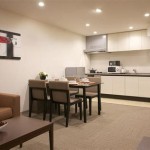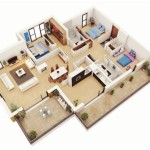Average Number of Boxes for a 2-Bedroom Move
Moving can be a daunting task, and one of the biggest challenges is estimating the packing supplies needed, especially the number of boxes. Accurately gauging box requirements can minimize costs and packing stress. This article explores the factors influencing box quantity for a typical two-bedroom move and provides a practical guide for estimation.
Key Factors Influencing Box Quantity
Several factors contribute to the number of boxes required for a two-bedroom move. Understanding these variables allows for more precise planning and efficient packing.
* Size of the bedrooms: Larger bedrooms naturally contain more furniture and belongings, necessitating a higher box count. * Amount of furniture: A minimally furnished apartment will require fewer boxes compared to one with numerous pieces of furniture. * Personal belongings: The volume of personal items, including clothing, books, and decorative pieces, significantly impacts box requirements. * Packing style: Efficient packing techniques can maximize space utilization within boxes, potentially reducing the total number needed. * Lifestyle of the residents: Individuals who tend to accumulate more possessions will require more boxes than minimalist dwellers. * Inclusion of kitchen and living area items: Two-bedroom moves often involve the relocation of kitchen and living room items in addition to bedroom belongings, influencing overall box quantity. * Use of professional movers: Professional movers often provide packing services and may have standardized box estimations based on their experience.
Estimating Box Needs for a 2-Bedroom Apartment
While the precise number of boxes varies based on individual circumstances, a typical two-bedroom move usually necessitates between 60 and 80 boxes.
Box Breakdown by Room
Breaking down the box estimation by room provides a clearer picture of individual needs. This approach facilitates organized packing and more accurate calculations.
* Master Bedroom: A master bedroom might require 20-30 medium to large boxes for clothing, shoes, bedding, and personal items. * Second Bedroom: A second bedroom, often smaller or used as a guest room/office, may need 15-20 boxes. * Kitchen: Kitchenware, appliances, and pantry items often necessitate 15-20 boxes, potentially including specialized dishpack boxes. * Living Room: Furniture, electronics, books, and decorative items in the living room can require 10-15 boxes or more, depending on size and quantity. * Bathroom: Bathroom essentials, toiletries, and linens typically require 5-10 smaller boxes.
Box Size Considerations
Utilizing a variety of box sizes enhances packing efficiency and protects belongings during transit. Strategic selection of appropriate box sizes is crucial for a successful move.
* Small boxes: Ideal for heavier items such as books, kitchen utensils, and toiletries, preventing overload and damage. * Medium boxes: Versatile and suitable for a range of items, including clothing, shoes, and small appliances. * Large boxes: Best suited for lightweight, bulky items such as bedding, pillows, and lampshades. * Wardrobe boxes: Designed for hanging clothes directly from closets, minimizing wrinkles and simplifying unpacking. * Dishpack boxes: Specialized boxes with dividers for safe transport of fragile dishes and glassware.
Additional Tips for Box Estimation
Accurately estimating box requirements involves several strategies to ensure a smooth and efficient move. Planning ahead and considering specific needs is crucial.
* Declutter before packing: Reducing unnecessary items minimizes the number of boxes needed and streamlines the moving process. * Overestimate rather than underestimate: It's always better to have a few extra boxes than to run short during packing. * Utilize existing containers: Suitcases, storage bins, and drawers can supplement purchased boxes, reducing overall costs. * Consult with moving companies: Professional movers can offer valuable insights and provide box estimates based on experience. * Consider specialty items: Large or irregularly shaped items might require specialized crating or additional packing materials.
Obtaining Moving Boxes
Sourcing moving boxes involves various options, each with its own advantages and cost considerations.
* Purchasing new boxes: Provides clean, sturdy boxes specifically designed for moving, ensuring optimal protection for belongings. * Obtaining used boxes: A cost-effective option, but ensure boxes are in good condition and structurally sound. * Renting reusable plastic bins: An environmentally friendly and convenient choice, eliminating the need for box disposal after the move.
Accurate box estimation simplifies the moving process and reduces stress. By considering the factors discussed, individuals can effectively plan their packing strategy and ensure a smooth transition to their new two-bedroom residence.

How Much Do Moving Boxes Cost Tips Forrent

How Many Packing Boxes Do I Need To Move House Roberts Denny S Removals Storage Kent

How To Choose The Right Amount Of Boxes For Any Move

How Many Moving Boxes Will You Need Apartmentguide Com

Moving Kit For Sale 48 Boxes Usedcardboardboxes

Apartment Moving Guide Two Bedroom Help

How Many Boxes Do I Need To Move Redfin

How Many Boxes Do I Need To Move Angi

How Many Moving Boxes Do I Need Help

12 Useful Charts To Help You With Your Move








